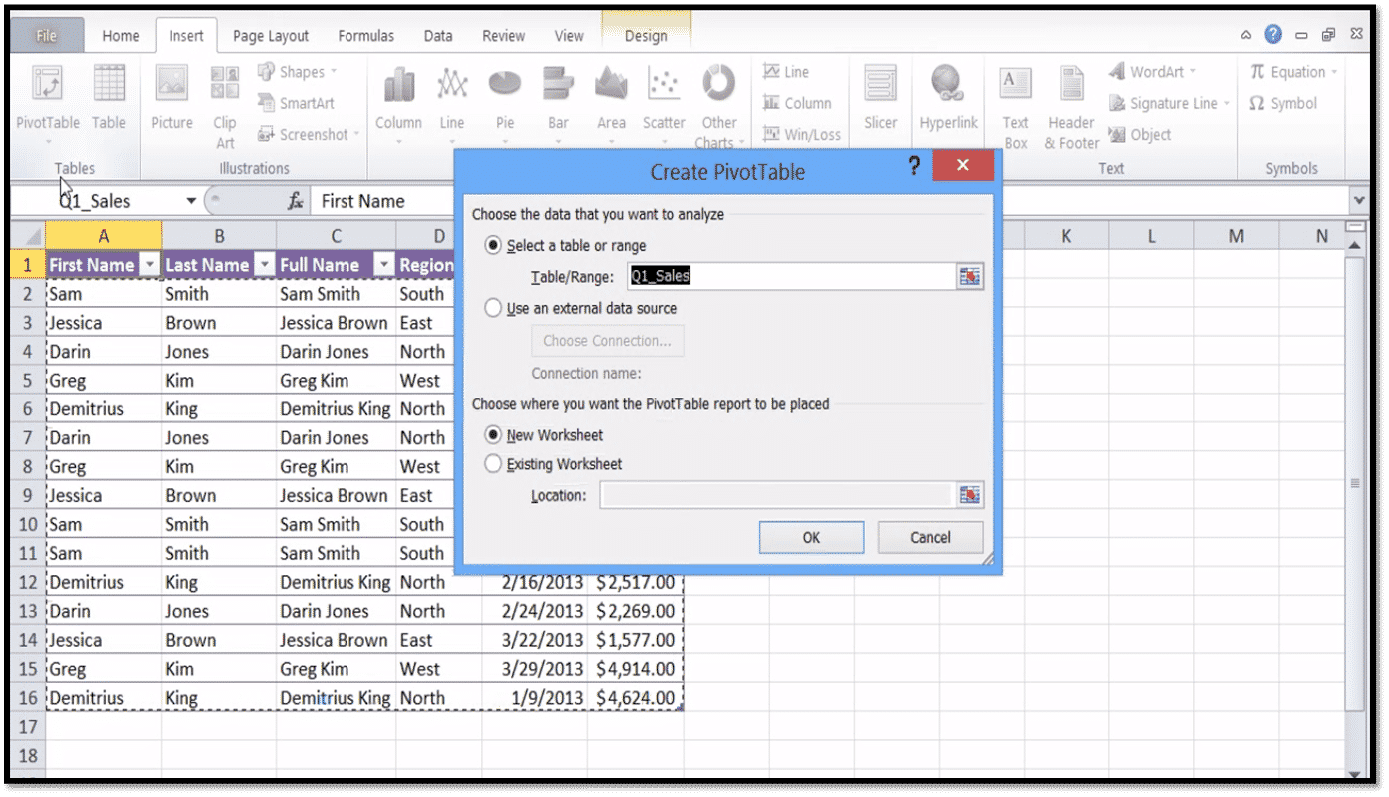
Pivot table data needs to be "refreshed" in order to bring in updates. Right-click any Sales value and choose Sort > Largest to Smallest.Įxcel now lists top-selling colors first. This sort order will be maintained when data changes, or when the pivot table is reconfigured. In the resulting pivot table, all sales values have Currency format applied:Ĭurrency format will continue to be applied to Sales values, even when the pivot table is reconfigured, or new data is added. Apply Currency formatting with zero decimal places, the click OK: Right-click any Sales number and choose Number Format:Ģ. This is a big time-saver when data changes frequently.ġ. Pivot Tables can apply and maintain number formatting automatically to numeric fields. You can see Color is a Row field, and Sales is a Value field: Let's take a look at the fields pane at this point.
Videos on pivot tables in excel 2013 full#
This makes sense, because we are still reporting on the full set of data. You can see Blue is the top seller, while Red comes in last: Drag the Color field to the Rows area.Įxcel breaks out sales by Color. This is the sum of all sales values in the entire data set:Ģ. Drag the Sales field to the Values area.Įxcel calculates a grand total, 26356. Learning to "read" the fields pane takes a bit of practice. See below and also here for more examples. Note: the pivot table fields pane shows how fields were used to create a pivot table. The Filters area is used to apply global filters to a pivot table. To build a pivot table, drag fields into one the Columns, Rows, or Values area. Note all five fields are listed, but unused: However, when learning pivot tables, it's helpful to see both the source data and the pivot table at the same time.Įxcel also displays the PivotTable Fields pane, which is empty at this point.

Note: there are good reasons to place a pivot table on a different worksheet. Click OK, and Excel builds an empty pivot table starting in cell H4. Override the default location and enter H4 to place the pivot table on the current worksheet:ģ. The default location for a new pivot table is New Worksheet.Ģ. Notice the data range is already filled in. To start off, select any cell in the data and click Pivot Table on the Insert tab of the ribbon:Įxcel will display the Create Pivot Table window. But generic data is good for understanding pivot tables – you don't want to get tripped up on on a detail when learning the fun parts. Excel Tables are a great way to build pivot tables, because they automatically adjust as data is added or removed. This data is perfect for a pivot table.ĭata in a proper Excel Table named "Table1". The sample data contains 452 records with 5 fields of information: Date, Color, Units, Sales, and Region. With experience, the pivot tables below can be built in about 5 minutes. In this section, we'll build several pivot tables step-by-step from a set of sample data. To understand pivot tables, you need to work with them yourself. The beauty of pivot tables is they allow you to interactively explore your data in different ways. You can group data into categories, break down data into years and months, filter data to include or exclude categories, and even build charts. With very little effort (and no formulas) you can look at the same data from many different perspectives. However, unlike a static report, a pivot table provides an interactive view of your data.

You can think of a pivot table as a report.


Pivot tables can dramatically increase your efficiency in Excel. Grab the sample data and give it a try. Learning Pivot Tables is a skill that will pay you back again and again. This article is an introduction to Pivot Tables and their benefits, and a step-by-step tutorial with sample data. With very little effort, you can use a pivot table to build good-looking reports for large data sets. Pivot tables are one of the most powerful and useful features in Excel. I am using Excel 2013 in this tutorial.Overview | Why Pivot? | Tips | Examples | Training In this Excel Pivot Table tutorial you will learn the Top 10 Tips when using a Pivot Table for Microsoft Excel 2019, 2016, 2013, 2010 or 2007 - for Beginners or Advanced users.


 0 kommentar(er)
0 kommentar(er)
